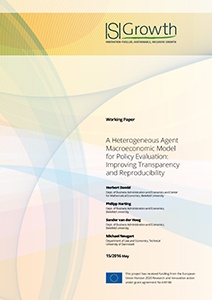This paper provides a detailed description of the Eurace@Unibi model, which has been developed as a versatile tool for economic policy analysis. The model explicitly incorporates the decentralized interaction of heterogeneous agents across different sectors and regions. The modeling of individual behavior is based on heuristics with empirical microfoundations. Although Eurace@Unibi has been applied successfully to different policy domains, the complexity of the structure of the model, which is similar to other agent-based macroeconomic models, has given rise to concerns about the reproducibility and robustness of the obtained insights. This paper addresses these concerns by describing the exact details of all decision rules, interaction protocols and balance sheets used in the model. Furthermore, we discuss the use of a virtual appliance as a tool allowing third parties to reproduce and verify the simulation results. The paper provides a systematic and extensive sensitivity analysis of the simulation output with respect to a set of key parameters. Particular emphasis is put on the question which parameter constellations give rise to strong economic fluctuations and high frequencies of sudden downturns in economic activity.
A Heterogeneous Agent Macroeconomic Model for Policy Evaluation: Improving Transparency and Reproducibility
Herbert Dawid
Dept. of Business Administration and Economics and Center for Mathematical Economics, Bielefeld University
Philipp Harting
Dept. of Business Administration and Economics, Bielefeld University
Sander van der Hoog
Dept. of Business Administration and Economics, Bielefeld University
Michael Neugart
Department of Law and Economics, Technical University of Darmstadt
Working Paper
15/2016 May

